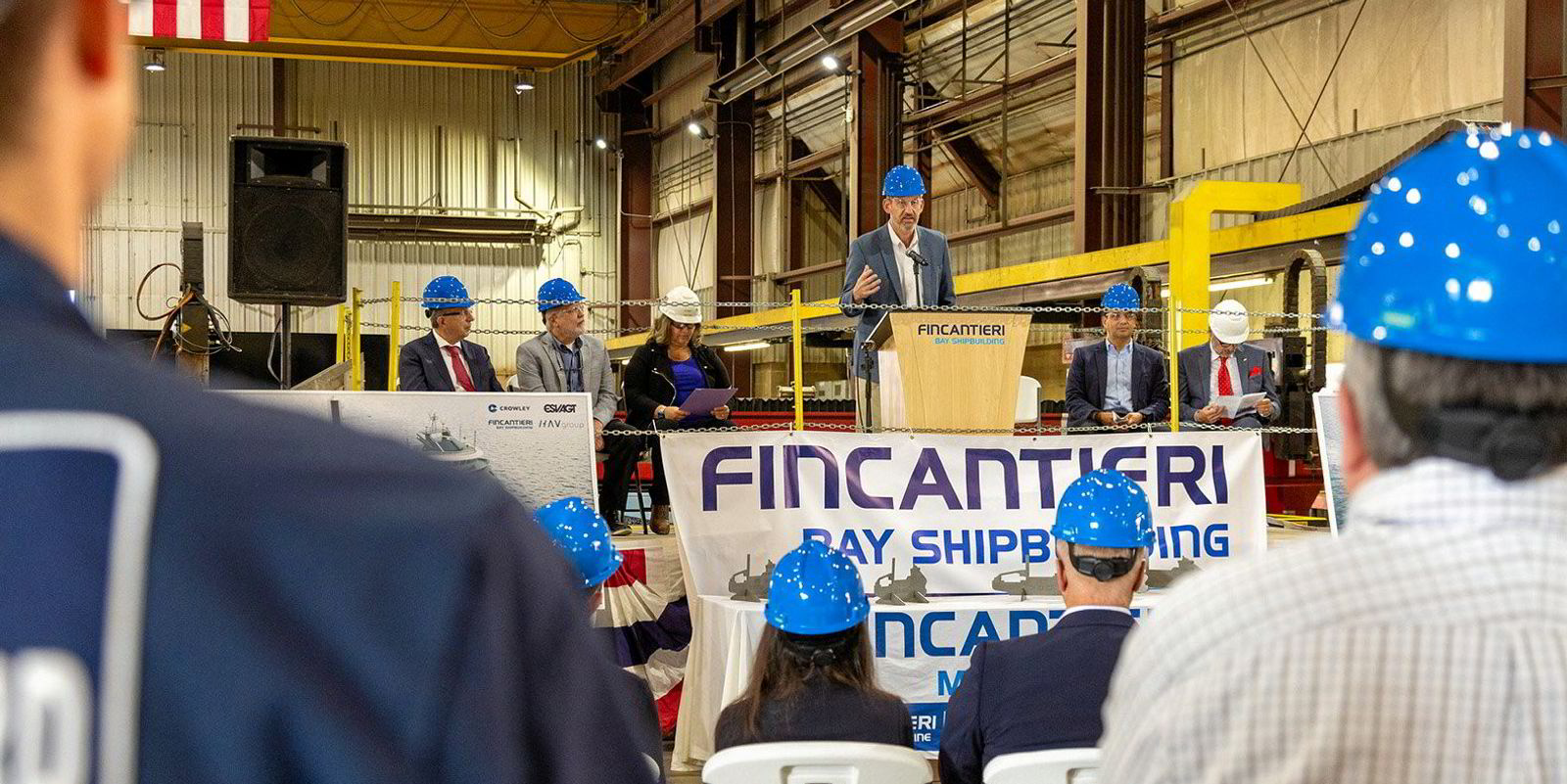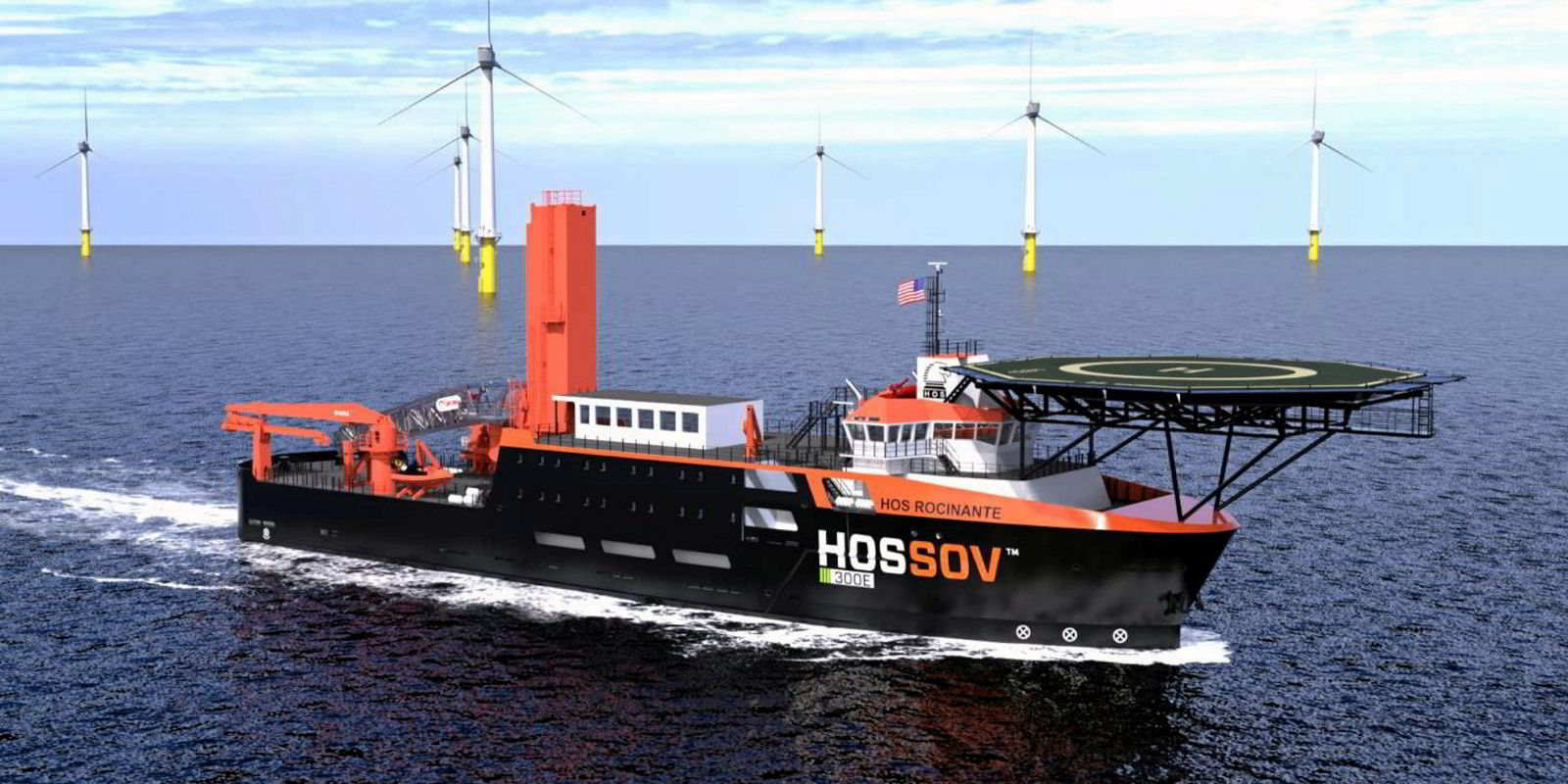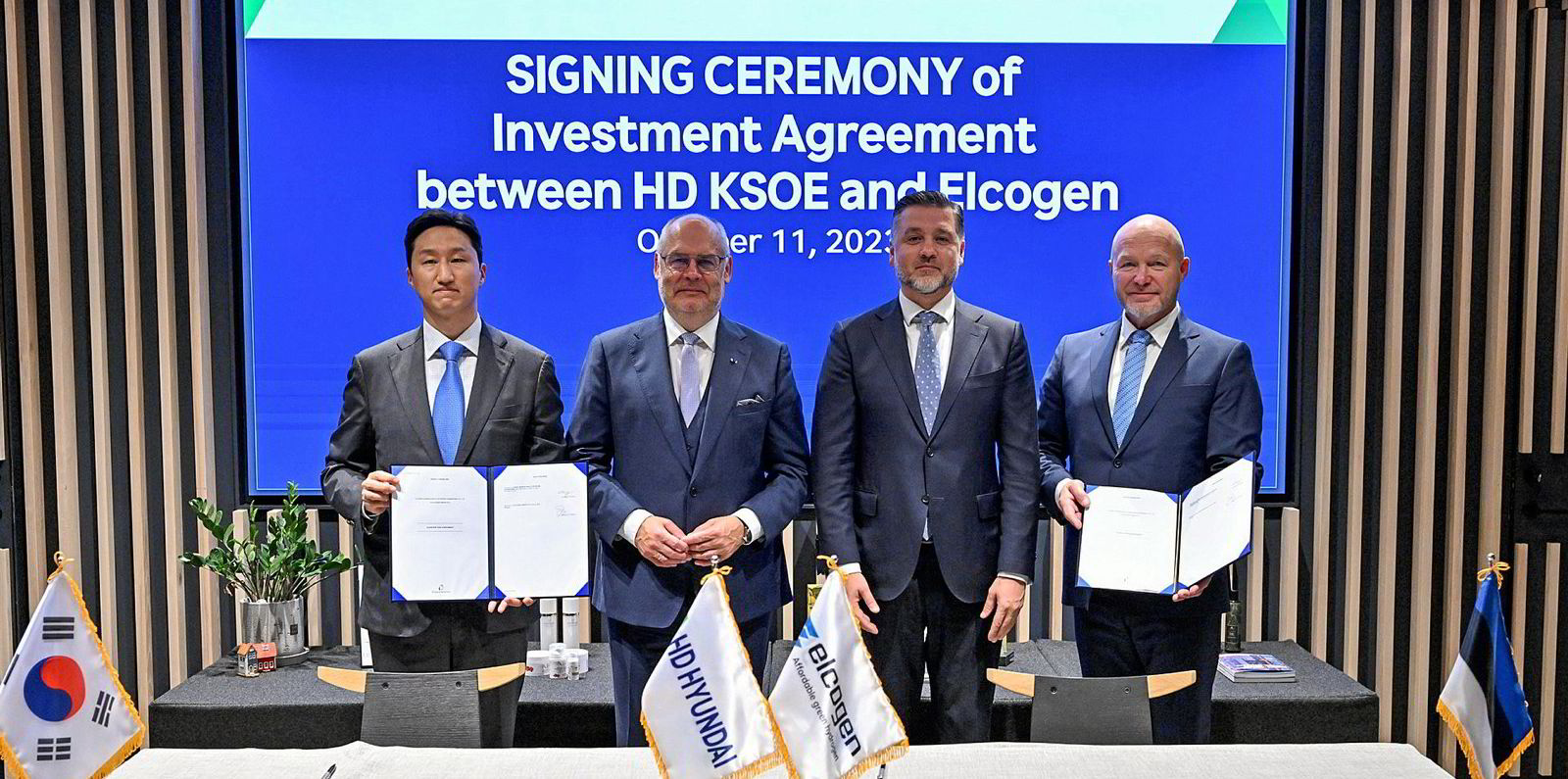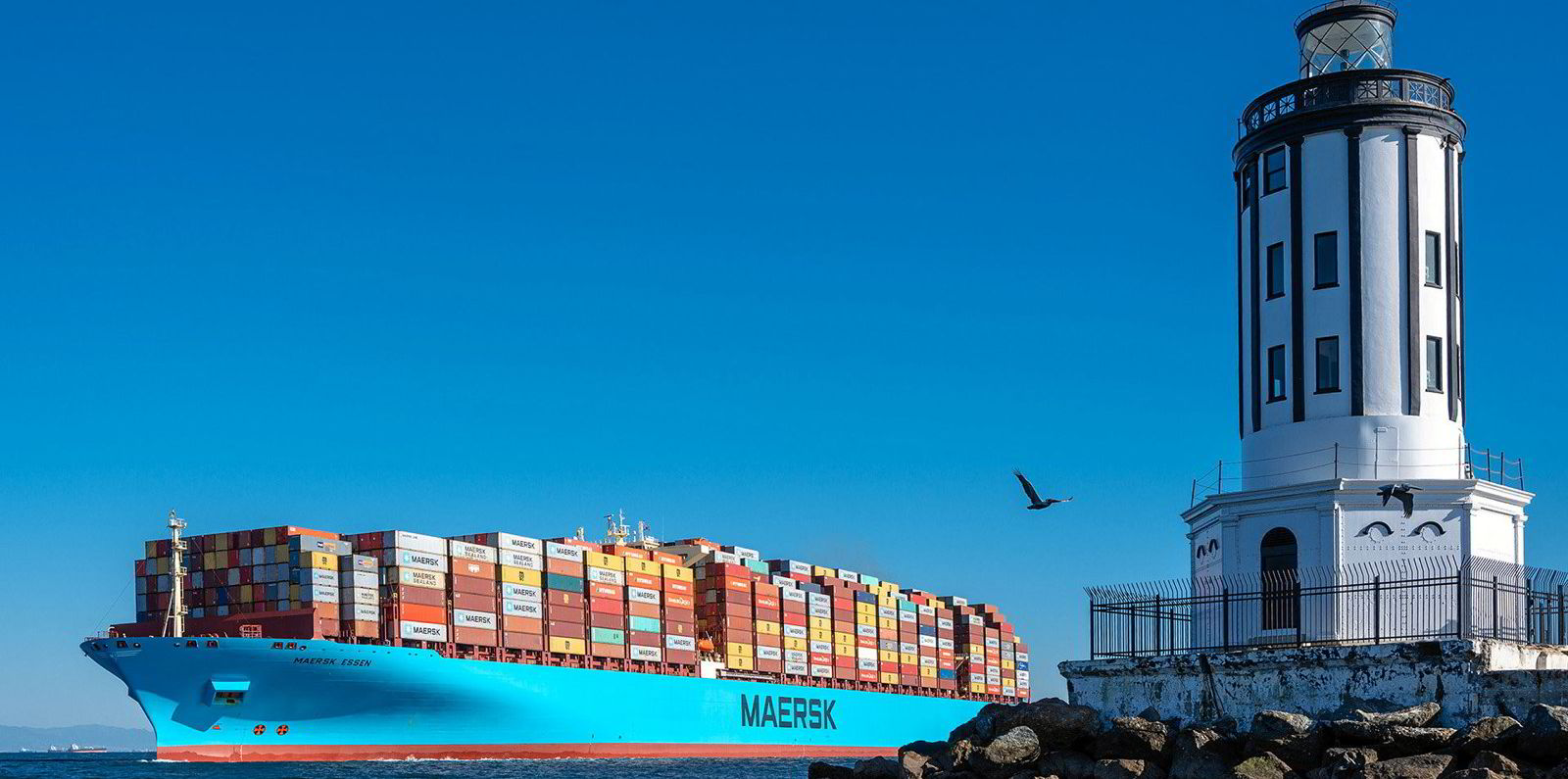The number of service operation vessels on order at US shipyards to serve the nation’s offshore wind sector has surged by 50% over the past year.
That sounds like a big jump, but it means that where there were two SOV newbuildings under construction this time last year, there are now three, according to data from shipbroking giant Clarksons.
A variety of factors, including rising newbuilding prices, shipyard labour shortages and an offshore wind farm project pipeline that has continued to slide, has led to delays in pondering these ships and others to serve this burgeoning market, which has been seen as a major opportunity for the US shipbuilding sector, experts in the market told TradeWinds.
Tim Axelsson, director of offshore wind at Liberty Green Logistics, said inflation and financing pressures have resulted in delays in procuring offshore wind vessel services.
“This, coupled with US yards going through a tight labour market with increasing costs, has resulted in higher pricing with a short-term validity of 60 days,” he told TradeWinds.
Liberty, an offshoot of Long Island-based shipping group Liberty Maritime, is focused on supply chain management for offshore wind projects in US waters and worked with Patriot Offshore Maritime Services to charter a crew transfer vessel newbuilding to the Vineyard Wind project, and said the company continues to work with its shipbuilding supply chain to lower risks associated with costs and to increase efficiency.
Axelsson said the demand for vessels to meet the needs of offshore wind projects is still there.
“It’s just being pushed to the right,” he said.
The US Jones Act requires vessels that carry cargoes or passengers from a US port to an offshore wind farm on the continental shelf to use tonnage that is made in America.
While that ensured a protected market for domestic shipowners and shipyards, it also meant Jones Act companies had to pay higher costs for newbuildings even before US shipbuilders faced their current challenges.
Some shipowners, seeing the opportunity of offshore wind projects but wary of surging newbuilding prices in an environment where contracts may not be long enough to back attractive financing terms, have found other ways to target the market.
Rather than build a new vessel, Louisiana-based Hornbeck Offshore Services struck a deal with Florida’s Eastern Shipbuilding in July to convert its 4,500-dwt platform supply vessel HOS Rosebud (built 2013) into an SOV.
Chief executive Todd Hornbeck said at the time that the project should cost less than $100m, compared with a newbuilding price in the range of $170m.
Before that, Otto Candies — also based in Louisiana — forged that path with two converted offshore support vessels contracted to serve the offshore wind sector.

The advantage of such deals is not just cost. Existing vessels are already financed, and in a high-interest-rate environment where few have been able to secure government loan guarantees, financing a newbuilding can be challenging.
Although Washington has labelled offshore wind ships as “vessels of national interest” in the Title XI loan guarantee programme, a US Maritime Administration list shows applications were still being reviewed on 5 October that had been filed in November last year.
Josh Shapiro, chief operating officer at Liberty Green, said he believes the US government should develop an effort such as the Maritime Security Program or the Tanker Security Program, which pay shipowners an annual stipend to defray the costs of operating under the US flag.
“The government could help by providing some kind of stipend towards people who make these larger commitments to build these [offshore wind vessels],” he told TradeWinds.
But US shipyards have also struggled with newbuilding projects in a tough labour market and the continued fallout from the Covid-19 pandemic’s impact on their production schedules.
The Charybdis — the first newbuilding wind turbine installation vessel constructed in the US — is so delayed at Keppel AmFELS that it is poised to miss its first job at the Revolution Wind project, as Recharge reported.

The cost for the vessel has risen from $500m to $650m, and orders for other US WTIV newbuildings are not expected to follow, with wind farm developers now favouring cheaper foreign-flagged vessels operating in tandem with domestically built barges that can help them stay in line with the Jones Act.
Although it is not constructing offshore wind vessels at its Philadelphia facility, Oslo-listed Philly Shipyard showed the scope of the challenge when it said in its last earnings statement that it was still working to mitigate the impact of operating disruptions during the pandemic.
“Despite aggressive recruiting efforts, the pandemic and mandate prevented Philly Shipyard from ramping up its workforce,” the company said in its July report. “Covid-19-driven labour shortages continue to impede Philly Shipyard’s efforts to efficiently maintain its workforce.”





